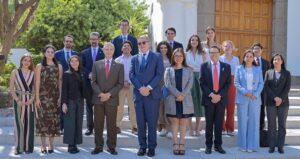Becoming malaria free by 2020
China is hosting the third E-2020 global forum of malaria-eliminating countries from 18-20 June, with a focus on eliminating malaria among populations at risk.

Much of 21st century medicine is still spent battling ancient diseases. Malaria is such an old disease that there are references to it in China dating back more than 3500 years in inscriptions on bones, tortoise shells and bronzeware. The circular nature of transmission of the parasite, from human to mosquito and back to human, the ability of the parasites to form resistance to treatments and the mosquitoes to insecticides, and the complex life cycle of the parasites makes malaria a tough disease to eliminate.
Yet many countries have made impressive strides in controlling and stamping out malaria. In 2016, WHO identified 21 malaria-endemic countries that could feasibly eliminate the disease by 2020. Together, these countries form the “E-2020 initiative” and are part of a concerted effort to drive indigenous malaria cases to zero within the 2020 timeline.
In 2018, Paraguay became the first E-2020 country to be certified by WHO as malaria-free, and this year Algeria was awarded the same status. Three other countries – the Islamic Republic of Iran, Malaysia and Timor-Leste – achieved zero indigenous cases of malaria in 2018. China and El Salvador, meanwhile, have been at zero since 2017, and Cabo Verde has been malaria-free since January 2018.
WHO’s Global technical strategy for malaria, adopted by the World Health Assembly in 2015, calls for the elimination of malaria in at least 10 countries by the end of next year. “We are very much on track to have 10 E-2020 countries at zero cases in 2020,” says Dr Frank Richards, chair of the Malaria Elimination Oversight Committee – an independent WHO advisory body that guides countries in their efforts to eliminate malaria – and an expert in parasitic diseases at The Carter Center, Atlanta, USA.
This week, China is hosting the third E-2020 global forum of malaria-eliminating countries from 18-20 June in Wuxi, Jiangsu Province, with a specific focus on eliminating malaria in populations at high risk of contracting malaria.
China is a good example of what happens when a country is determined to eliminate malaria – this became the joint goal of 13 ministries, including health, finance, industry, and education. The results were impressive and the country has gone from 30 million cases in the 1940s to zero indigenous cases in 2017.
Find out how China went from 30 million to zero
The countries within the E-2020 initiative vary greatly in their geography and transmission patterns, yet despite their differences, they have many lessons to share with each other. “It has been gratifying to see how countries in the E-2020 are learning from each other,” says Dr Kim Lindblade, team leader of the WHO’s Global Malaria Programme’s elimination unit. “We have seen ideas move from country to country, and region to region. These linkages help diffuse innovations from one context to another.”
WHO Certification of malaria-free status
WHO grants a certification of malaria elimination when a country has proven, beyond reasonable doubt, that the chain of indigenous transmission has been interrupted nationwide for at least the previous 3 consecutive years. In addition, a national surveillance system capable of rapidly detecting and responding to any malaria cases must be operational, together with an appropriate programme to prevent re-establishment of transmission. To date, 38 countries and territories having been certified malaria-free by WHO.
The Malaria Elimination Oversight Committee bolsters countries’ efforts, says Dr Richards, by acting as an advocate “urging, if appropriate, more domestic political and financial support. That’s fundamental in the last mile of the elimination effort, and future sustainability of surveillance and response to prevent resurgence of malaria in the future.”
Countries need a few key ingredients to get to zero, says Dr Kamini Mendis, a member of the Committee and professor emeritus at the University of Colombo in Sri Lanka, including “a very effective state-of-the-art surveillance and response system, uninterrupted funding, and a responsive elimination programme that can respond rapidly to changes.” These must be accompanied by strong technical leadership and people on the ground “with staying power until zero cases are achieved,” she adds.
Once the WHO’s Malaria Elimination Certification Panel verifies that a country is malaria-free, however, countries cannot be complacent. Two years after Sri Lanka was certified free of malaria, an imported case from neighbouring India led to local transmission; Sri Lankan authorities quickly responded and prevented any further cases.
Malaysia faces significant challenges of the disease being brought in from returning Malaysians who work outside the country in professions that are at high risk of malaria, such as plantation workers and loggers. Many other countries have porous borders, including China and Myanmar, where every morning Chinese market sellers traverse the border into Myanmar, and children from Myanmar cross over for free schooling in China.
While countries must be vigilant, with the support of WHO and others, to prevent re-establishment of the disease, “the E-2020 initiative is an opportunity to celebrate programmatic successes,” says Dr Lindblade. “We have to remember that national malaria programmes are made up of people who are dedicating their careers to eliminating a deadly disease from their communities. Recognizing their accomplishments is often emotional.”
The initiative is also expanding. In 2020, Dr Richards expects the announcement of a new tranche of countries – the “E-2025” – that they expect will reach zero cases by 2025. These new ‘recruits’ will be able to look towards the example of countries such as China, which along with El Salvador, “could be up for certification next year,” says Dr Richards.


















